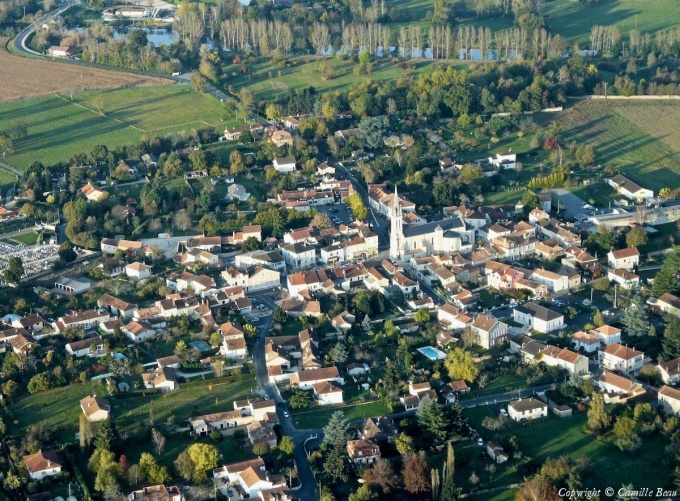When Anne-Fleur was born, her parents were living in a village in the South-West of France.

France is divided into different administrative entities. In 1959, the French State had still the same administrative divisions that were established by the Revolution and the First Empire of Napoleon I: départements, (like counties in the UK and states in the US), cantons within the départements, and communes within the cantons. The département was Dordogne (or la Dordogne) of which the main town is Périgueux. It had about 45.000 inhabitants. The village was a chef-lieu de canton, the main village in the smaller administrative entity, and at that time, it comprised some 2.000 inhabitants on the whole surface of the commune. The village itself must have had some 300 inhabitants, the others were dotted around in hamlets, or isolated farms.
This was rural country: plenty of small farms with farmers cultivating their own land: wheat, corn, tobacco, hay, two or three long rows of vine trees for a very bad wine for domestic consummation, some sheep, four to six cows, a horse, rabbits, hens, ducks, vegetables, walnut trees (for the oil): these little establishments were mainly for domestic use and sale to the coop as well as for the neighbours.
The country had a long tradition in the shoe and slipper industry. It is an area of rivers, brooks, pools, water. The small familial industries were established near these rivers and brooks. But during WWII, a factory was pushed from Czechoslovakia to the West, and made its way slowly to Eastern France, and from there to the South-West, that was not invaded by the Germans until the middle of the war. This factory was a branch of what was to become an international enterprise, based in Canada. It was an opportunity for jobs in the area, and Anne-Fleur's parents both worked there.

Anne-Fleur was not born in the maternity ward of the cottage hospital in The Village, but in the recent and modern maternity hospital in Périgueux.
That was lucky. In 1959, Down’s syndrome was not known and detected as early as it is now. Even at birth, it was not sure that the good sisters in charge of the cottage hospital in The Village would have recognised it and talked to the parents. In fact, it took almost ten days for them to know why their second daughter had not the same reactions and deportment as their first daughter when she was born.
The gynaecologist and obstetrician went to look at the baby in her mother's room, ahemed, turned around the cradle, ahemed again, took the tiny girl and looked at her rag-doll, spineless attitude, ahemed again, opened his mouth, shut it, smiled wanly at the mother, ahemed, and went away, softly closing the door.
He sent a letter to the family doctor who was a friend and who had to undertake the delicate mission to explain to the parents what was "wrong" with the child. I don't know what happened then. I only know that they were told that there were degrees in Down’s Syndrome and that they had to be prepared for a totally invalid daughter who would never walk, talk or eat properly, and would stay lying like a vegetable.
For what I gathered from half sentences later, there was anger, suffering, guilt, anxiety, fear, and an over-whelming will to give the little girl the best of care with love within her family.
A team was soon established around her. The family doctor made contacts with other doctors in Bordeaux. The doctors in Bordeaux contacted psychologists, speech therapists, physiotherapists, and all therapists needed. The family drove every month to Bordeaux - about 100 kms further south - for a day there among the specialist team that had been created for their daughter. Then, there were two days per week where they drove to Périgueux - about 25 kms north - for practical exercises indicated by the Bordeaux team to the Périgueux team. And they managed to fit daily exercises with local help in The Village.
At that time - the beginning of the 1960s -, Anne-Fleur's mother did not drive. She had a bicycle and walked. Her father was working: he had to take days off to drive the family to Bordeaux and Périgueux. They might have moved to Bordeaux or any other city but it was recommended that Anne-Fleur had lots of space and could experiment with water, earth, sand, grass, move freely when she started crawling. They had a house with a large garden: they stayed there.
And so life began in The Village, going to and from The City and The Town, but finally stuck in the house, revolving around Anne-Fleur.
No comments:
Post a Comment